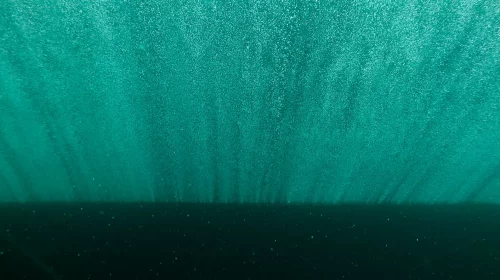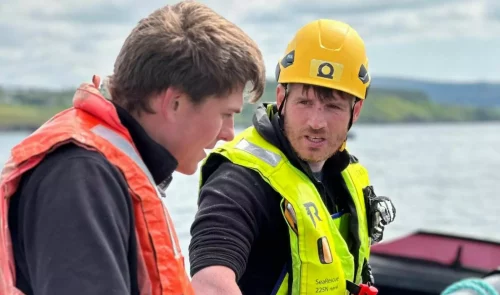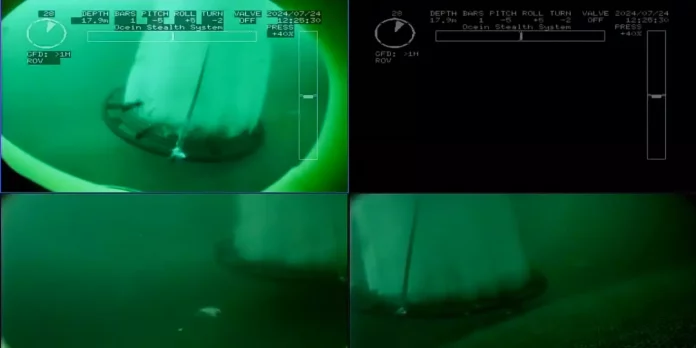Mowi Scotland trials microbubble curtains to block the entry of harmful algal blooms (HAB) and jellyfish.
Chilean company Low O2, a subsidiary of the PSP Group specializing in environmental solutions, has launched two projects in Scotland.
In recent years, Scottish waters have seen an increase in jellyfish blooms and higher concentrations of zooplankton and phytoplankton, leading to higher fish mortality rates.

Low O2’s new initiatives in South Uist and the Isle of Skye aim to address these rising risks. At the Stulaigh salmon farm in Uist, the company installed a Tight Microbubbles Screen (TMS) system at a depth of 25 meters. This microbubble barrier acts as a protective fence, blocking harmful agents like jellyfish and phytoplankton. According to the company, TMS technology has been successfully implemented in over 150 projects worldwide.
The second project, at the Maol Ban farm on the Isle of Skye, involved setting up a water upwelling system using aeration discs. This system improves conditions for salmon by boosting oxygen levels, balancing water temperature, and reducing surface algae.

Cameron Jones from Mowi Scotland remarked on the new installations: “Mowi Scotland has been testing new technologies like bubble curtains and water upwelling systems to protect our salmon from harmful plankton, particularly jellyfish. The combination of these technologies and better identification methods is working well, and our salmon are thriving this summer.”
Luis Sepúlveda, CEO and co-founder of Low O2, highlighted the preventive nature of their technology: “Our TMS technology effectively blocks harmful agents, reducing risks for the fish and minimizing their interaction with the surrounding marine environment.”


